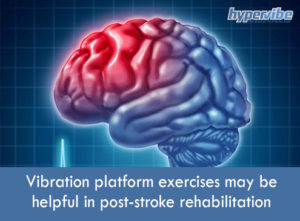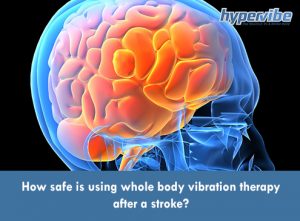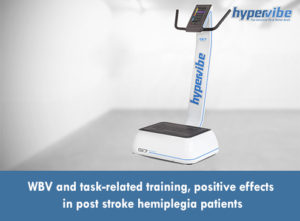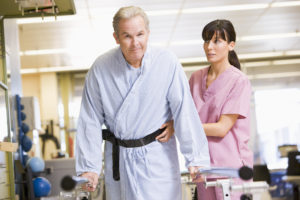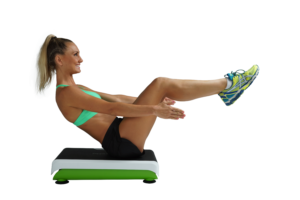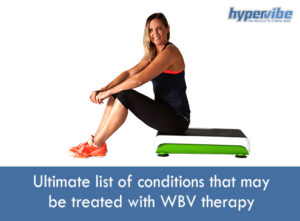Whole body vibration for rehabilitation in stroke survivors
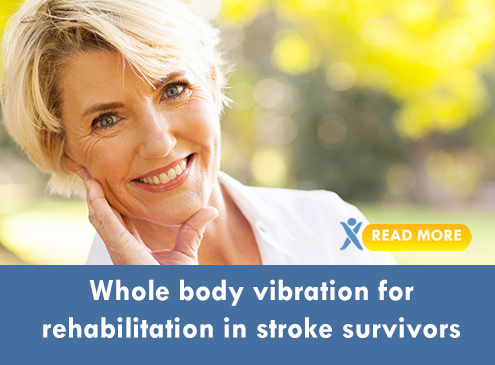
Stroke is one of the leading causes of disability worldwide, and almost 2/3 of those affected by stroke require rehabilitation in order to relearn skills that have been lost due to brain damage. Some stroke survivors never recover completely, while others manage to become independent and improve their quality of life through specific rehabilitation programs.
Rehabilitation in stroke sufferers doesn’t repair the brain areas that have been damaged, but it does help survivors relearn skills like coordinating their movements in order to walk or pick up things without assistance. At the same time, rehabilitation exercises teach survivors new ways to perform daily tasks, this being often necessary for compensating for the stroke residual disabilities.
Although the severity and types of disability following a stroke depend on the brain area that was damaged, in most people a mix of disabilities results from this condition: paralysis or problems controlling movement, speaking problems, memory or thinking problems, sensory disturbances and emotional disturbances.
Paralysis is the most common disability that results from stroke and it usually affects the body side that is opposite to the brain side damaged by stroke. Paralysis may affect the arms and legs, the face or the entire body.
One-sided paralysis is called hemiplegia, and may severely affect one’s ability to perform daily. Hemiplegia may be accompanied by hemiparesis (weakness of the muscles) and dysphagia (problems swallowing), as well as by ataxia or the inability to coordinate movements as a result of damage to the cerebellum. Patients with ataxia have poor posture and problems with walking and maintaining balance.
In some stroke survivors the body no longer feels pain and loses the ability to feel temperature; some patients experience numbness and tingling sensations, pain that radiates outward from the shoulder, loss of urinary continence and constipation.
Other effects of stroke include shortened attention spans, problems in making plans or with short-term memory, the inability to plan and organize tasks, anxiety, sadness, depression accompanied by sleep problems, weight loss or weight gain, irritability, fatigue and even suicidal thoughts.
The recovery process usually starts within 48 hours after a stroke, but even so, some people may never regain some of the lost abilities, and others may find it extremely daunting to relearn skills like bathing, dressing, speaking or walking. On the other hand, research shows that exercise-based rehabilitation programs may improve fitness and cardiovascular health and may reduce the extent of stroke damage.
Whole body vibration therapy in stroke survivors
Although some still think of whole body vibration as a fitness tool only, research shows this form of physical activity may also be used for rehabilitation purposes, and stroke sufferers may be among those who benefit the most from WBV therapy.
A study published in the journal of Medicine and Science in Sports and Exercise showed that the addition of vibration training to one’s rehabilitation program leads to a significant increase in leg muscle activity, both high and low-intensity WBV protocols having similar effects.
Whole body vibration increased the muscle activity in the paretic and nonparetic leg muscles to a similar extent in different exercise conditions, but further studies are needed for establishing the best approach and parameters for WBV rehabilitation in stroke sufferers. This study was done on 45 patients with chronic stroke, who underwent low or high-intensity WBV routines, performing 8 different static exercises.
Similar results were found by researchers at the Hong Kong Polytechnic University, China, who published their study in the journal of Physical Therapy. The paper showed that adding whole body vibration exercises to the rehabilitation program of stroke sufferers increases the muscle activity in paretic and nonparetic legs.
The results were not influenced by the degree of motor impairment and spasticity; the parameters used were 20Hz, 0.6 mm, 0.96G for the low-intensity WBV group, respectively 30Hz, 0.44 mm, 1.61 G for the high-intensity WBV group.
Have something to add to this article? Comment below or join our Facebook community and share your thoughts with us!






